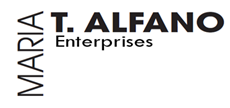 By using Payment Evolution in processing your payroll and business payments throughout the year, you don’t have to think about the deadlines. As the year-end comes, use the following checklist to check out your pay runs and submissions.
By using Payment Evolution in processing your payroll and business payments throughout the year, you don’t have to think about the deadlines. As the year-end comes, use the following checklist to check out your pay runs and submissions.
To begin with, set up the My Business access which can be located on the site of Canada Revenue Agency. This is the best way for submission and review of your year-end tax slips prior to the deadline on Feb 28, 2017.
Check Reports and Reconcile
Sign in to your account and check at the ‘year-to-date’ reports. Get your payroll data and send it to your accounting system. Make sure that you get the records correctly source deductions, special employment payments and more. Moreover, check the details about your employee which include accurate social insurance numbers, TD1 amounts and correct ‘year-to-date’ information. Let your employees know regarding outstanding vacation balances.
Final Pay Run
Once you settled your pay runs for the year, do the final changes on the final pay run. Record any vacation balances and transfer any amounts based on your company policy. Then close the rest of payroll periods after the final pay run. Note that after your process a pay run, the new payroll year will be automatically available. The payment date for this would be in 2017.
Tax Reporting
Next to final pay run, you can now have your final tax report prepared for the year.
Prepare for the New Year
When it comes to any unused vacation balances, the system will transfer them automatically. In case a company got a different policy, you have to make some adjustments. Transfer important items such as loans and advances etc. to your employer’s profile. Notify your employees regarding the submission of a new TD1 form. Keep and file these forms and make adjustments on each employee profile. This is for the accommodations of new exemptions. At the same time, change your pay rules when you altered some company benefits, deductions or earnings. Finally, if you are not registered yet to ePay or direct deposit service, you may do it now.
Here are the new rates for 2017:
EI premium rate and maximum
Every year, we provide the highest possible insurable earnings and rate in order for you to figure out the EI amount to be subtracted from your employees. Moreover, you need to pay 1.4 times the amount of the premiums.
Example
EI premiums you deducted from your employees for the month
$217
Plus: Your share of EI ($217 × 1.4)
$303.8
Total amount you remit for EI premiums
$520.8
You end the deduction for employment insurance premiums for two conditions:
- Getting the maximum insurable earnings for employees, which is ($51,300 for 2017
- Getting the year’s maximum employee premium which is $836.19 for 2017.
For Quebec, $651.51 is the maximum employee premium for 2017.
Source: http://www.cra-arc.gc.ca/tx/bsnss/tpcs/pyrll/clcltng/ei/hstrc-eng.html
Canada Pension Plan (CPP) Contribution Rates
For the year 2017, the Canada Revenue Agency increased the maximum pensionable earnings in Canada Pension Plan to $55,300 from $54,900 in 2016. This increase has considered the growth in average wages and salaries per week in Canada.
- For contributors who earn over $55,300 in 2017 are not allowed and mandatory for extra contributions to the CPP.
- For 2017, the basic exemption amount is still on $3,500.
- Meanwhile, the contribution rates of employee and employer for 2017 remains at 4.95%. At the same time, contribution rate for self-employed is still unchanged at 9.9%.
The following rates are the maximum contribution to the CPP for 2017:
- $2,564.10 – for maximum employer and employee
- $5,128.20 – for maximum self-employed
Sources: http://www.taxtips.ca/cppandei/cpprates.htm & http://www.advisor.ca/tax/tax-news/cra-announces-2017-maximum-pensionable-earnings-218748
Quebec Pension Plan (QPP) Contribution Rates
Quebec Pension Plan (QPP) is a mandatory and public insurance program for workers, 18 and above having over $3500 of annual income from employment. This program aims to give Quebec workers and their families, basic financial insurance for their retirement or unfortunate events such as death or disability.
Revenue Quebec has set changes to the QPP contribution rate and starting from 2012, the employee and employer rates that is expected to increase up to 5.4% in 2017.
Source: http://www.rrq.gouv.qc.ca/en/employeur/role_rrq/Pages/cotisations.aspx
Here’s to helping you better understand what’s in your pocket.
Until next time.

Let us know what you think